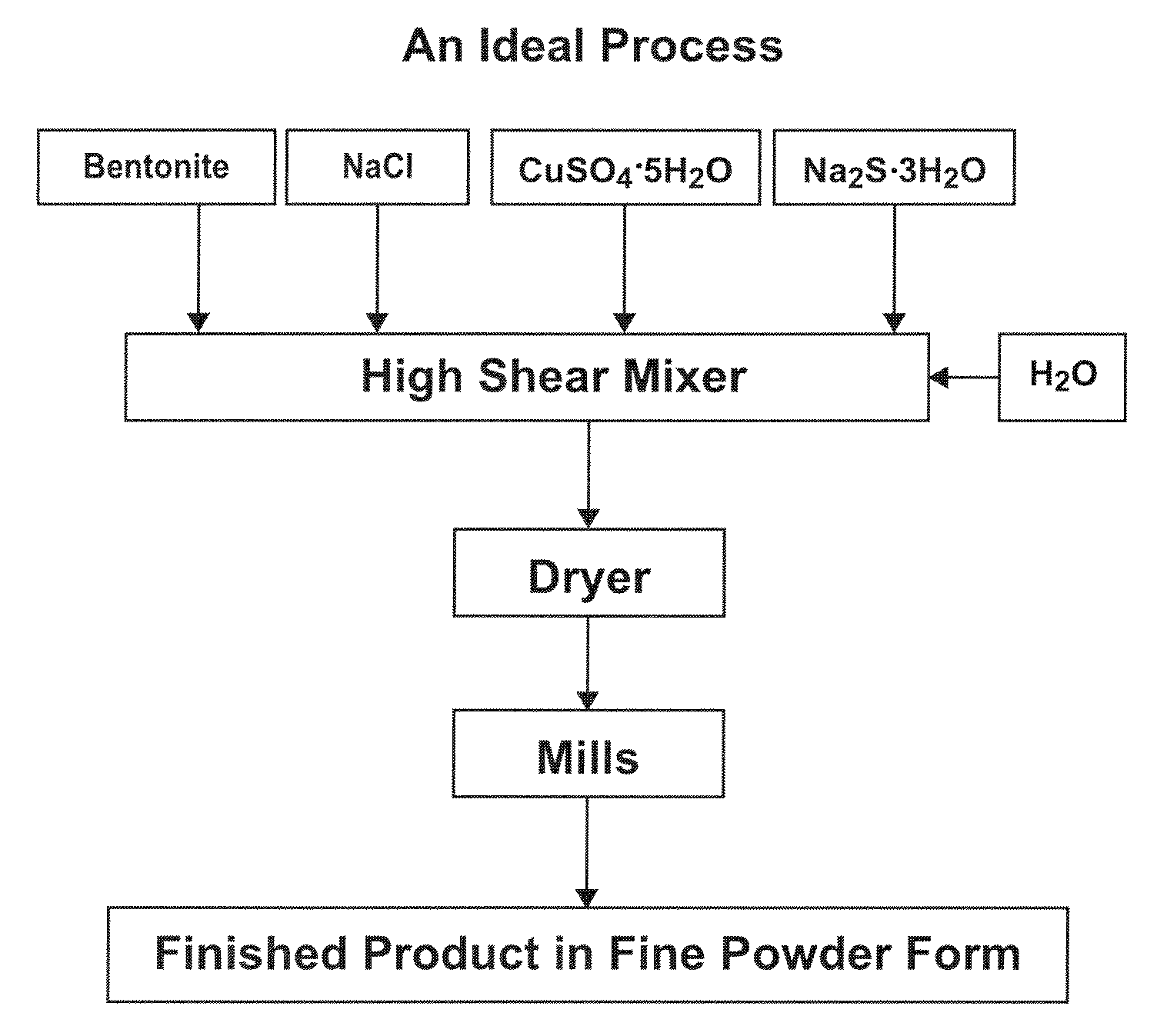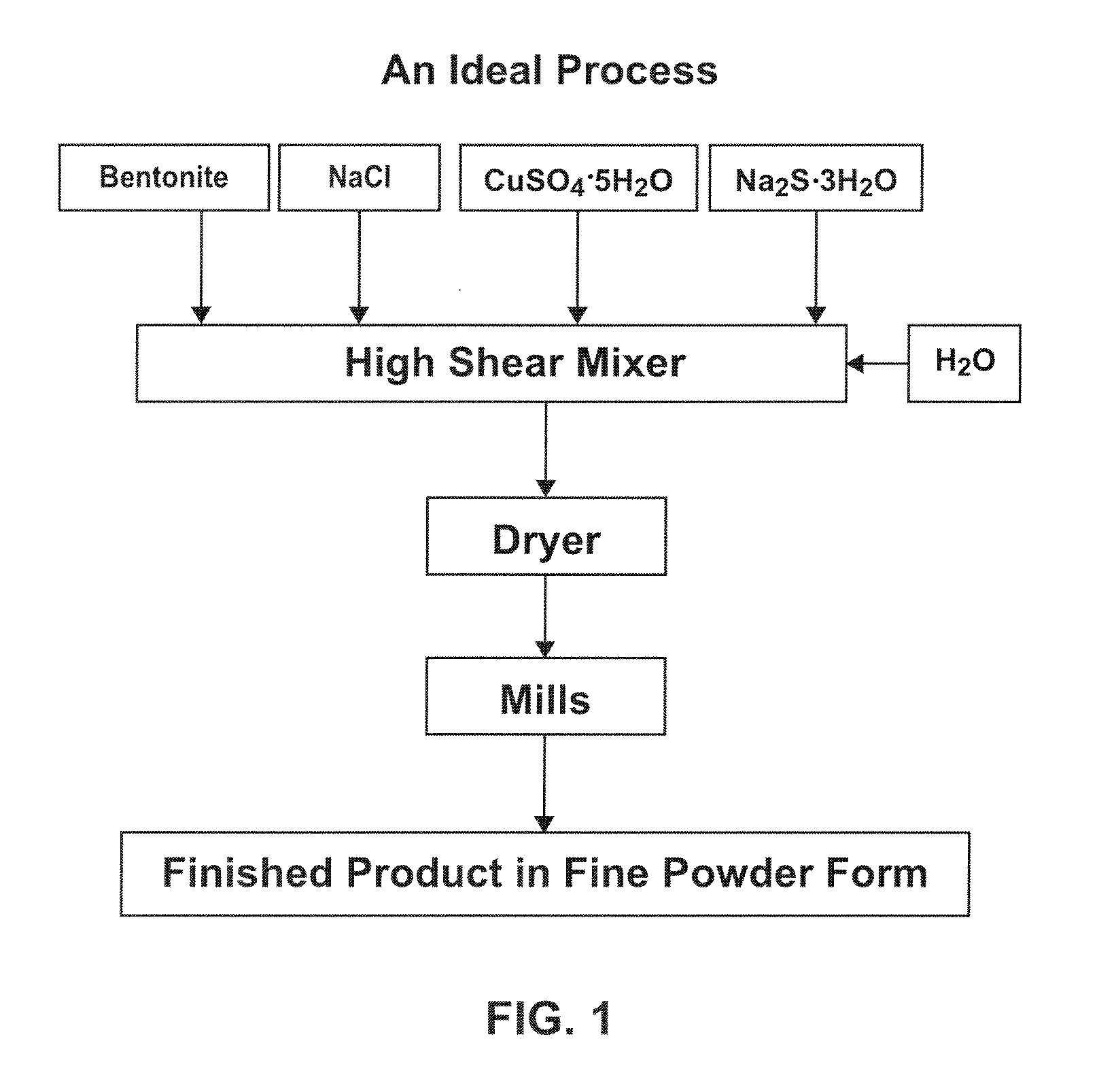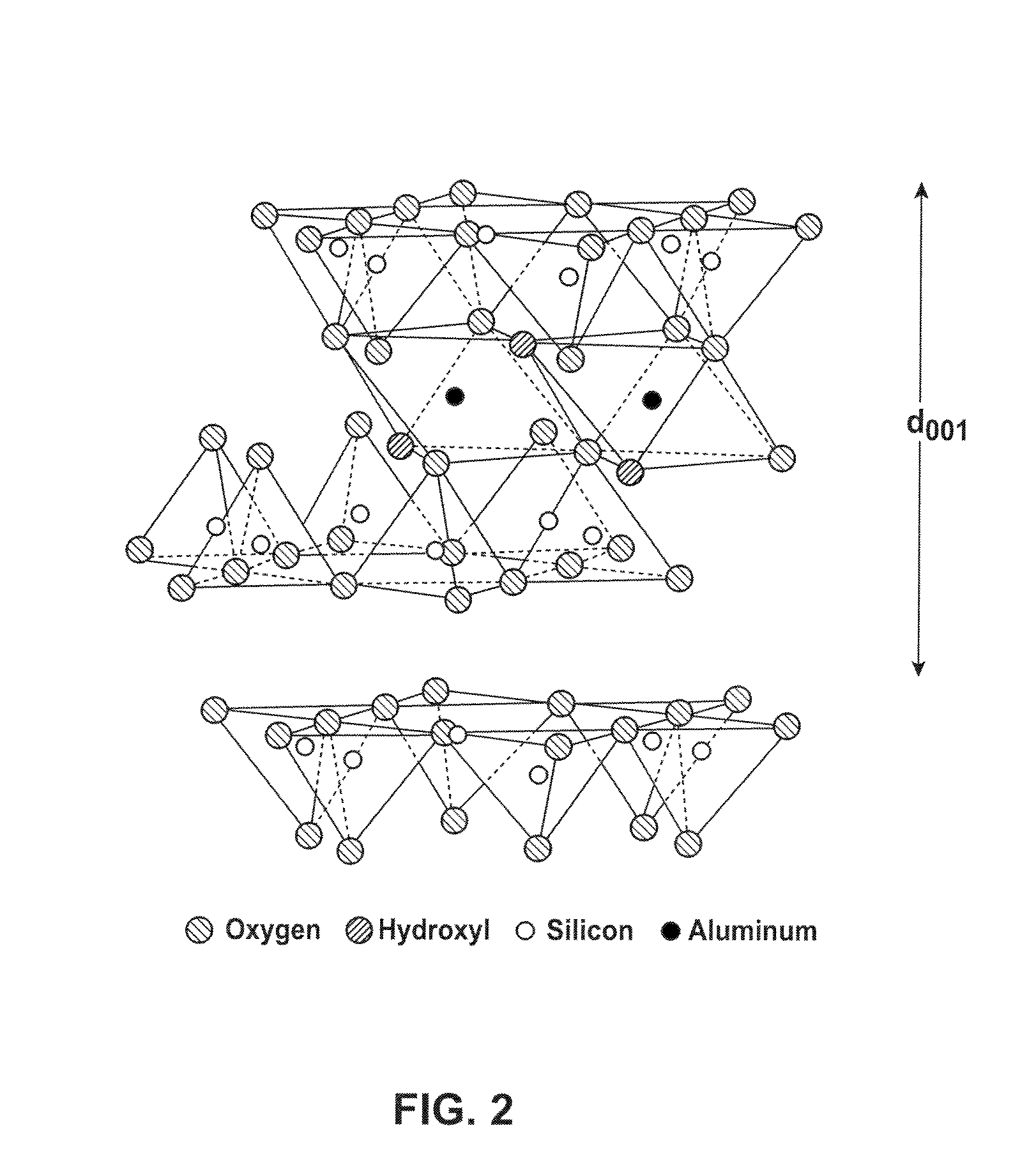Flue Gas Scrubbing
a technology of flue gas and scrubbing, which is applied in the direction of physical/chemical process catalysts, other chemical processes, separation processes, etc., can solve the problems reducing the fiscal compatibility of absorbent materials, and reducing the concentration of activated carbon in fly ash waste stream. , to achieve the effect of reducing the concentration of mercury
- Summary
- Abstract
- Description
- Claims
- Application Information
AI Technical Summary
Benefits of technology
Problems solved by technology
Method used
Image
Examples
example 1
[0052]In the bowl of a KITCHENAID stand mixer, 368.5 g sodium bentonite (85% passing 325 mesh), 16.5 g sodium chloride (United Salt Corporation, passing 20 mesh), 57.0 copper sulfate pentahydrate (Old Bridge Chemicals, Inc. passing 40 mesh), and 31.0 g sodium sulfide trishydrate (Chem One Ltd.) were admixed for 5 minutes. Then 74.0 g de-ionized water was added to the mixture and the mixture was stirred 5 minutes. The mercury sorbent mixture was then extruded three times using a laboratory-scale extruder with a die-plate. The extrudates were then oven-dried at 100° C. The dried extrudates were ground and resulting particles passing through a 325 mesh screen were collected. The final moisture content of this sample was approximately 2 wt. %.
example 2
[0053]In the bowl of a KITCHENAID stand mixer, 232.0 g sodium bentonite, 26.4 g sodium chloride, 91.2 g copper sulfate pentahydrate, and 49.6 g sodium sulfide trishydrate were admixed for 5 minutes. Then 52.4 g de-ionized water was added to the mixture and the mixture was stirred 5 minutes. The mercury sorbent mixture was then extruded three times using a laboratory-scale extruder with a die-plate. The extrudates were then oven-dried at 70° C. The dried extrudates were ground and resulting particles passing through a 325 mesh screen were collected. The final moisture content of this sample was approximately 3.5 wt. %.
example 3
[0054]A mercury sorbent mixture was prepared by admixing 2,060 lbs sodium bentonite, 92.2 lbs sodium chloride, 318.6 lbs copper sulfate pentahydrate, 173.3 lbs sodium sulfide trishydrate in the bowl of a paddle mixer. The mixture was combined for 20 minutes and then fed into a 5 inch READCO continuous processor (by Readco Manufacturing Inc.) at a feed rate of about 900 lb / hr. As the mercury sorbent mixture was fed into the processor, water was fed into the processor through a liquid injunction port (separate from the dry-mixture feed port) at about 0.35 gallon / minute. The extrudate was dried at about 100° C. and ground to reduce the particle size. The mercury sorbent materials was found to have an average particle size of about 5 to about 25 μm and a moisture content below 10 wt. %.
PUM
| Property | Measurement | Unit |
|---|---|---|
| Fraction | aaaaa | aaaaa |
| Mass | aaaaa | aaaaa |
| Fraction | aaaaa | aaaaa |
Abstract
Description
Claims
Application Information
 Login to View More
Login to View More - R&D
- Intellectual Property
- Life Sciences
- Materials
- Tech Scout
- Unparalleled Data Quality
- Higher Quality Content
- 60% Fewer Hallucinations
Browse by: Latest US Patents, China's latest patents, Technical Efficacy Thesaurus, Application Domain, Technology Topic, Popular Technical Reports.
© 2025 PatSnap. All rights reserved.Legal|Privacy policy|Modern Slavery Act Transparency Statement|Sitemap|About US| Contact US: help@patsnap.com



